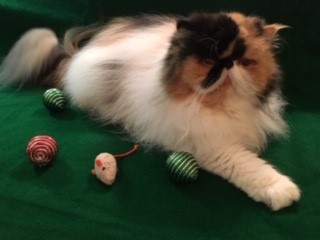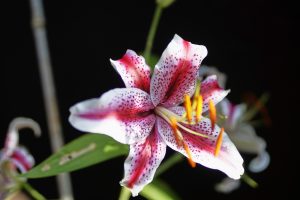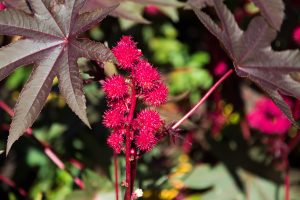Are the Lovely Flowers on your Table Lethal to Your Pet?

GREETINGS READERS,
My friends all know that I am an avid animal lover. In fact, every generation of my family, known to me, has loved animals. The image above, circa 1952, is of my father and our beloved dog, Buffy.
My father adored Buffy, and she reciprocated—so much so that when Daddy came home from his weekly travels, greeting Buffy was required to be held outside as her excitement exceeded her bladder control. Why I post this image stems from an event in 1955 when the family moved into a new home. Within days, Buffy became ill and, despite prompt medical attention, died. Distraught, my father shed very real tears—the only time I saw him do so.
To soothe the pain, the family reached out to the classified ads and found a litter of Pomeranian puppies for sale. Buffy was a mixed breed, but Pomeranians offered the closest resemblance. Within 48 hours of Buffy’s death, the family had six-week-old Timmy. It was love at first sight, even though we still grieved the loss of Buffy.
Sadly, within days of bringing Timmy home, he fell ill. Devasted, my parents rushed him to the vet. Fortunately, he threw up on the examination table and a leaf emerged. The vet immediately recognized the castor bean leaf and said, “Did this come from a plant in your yard?”
The answer was yes, to which he replied: “This is what killed your other dog. The foliage and pods of the castor bean plant are highly poisonous.”
I am happy to say that Timmy was saved, and my father destroyed every castor bean in our yard—there were many.
This story echoed in my mind when on my last birthday, I received a beautiful flower arrangement. I positioned it on a table in front of the den couch and admired the beauty and aroma of the roses and lilies for nearly a week.
Generally, Juliette stays in my bedroom, where she sleeps next to me while I write. However, one evening near the end of birthday week, she decided she wanted to stretch her legs and asked to leave the bedroom. I opened the door and she trotted to the den. When I decided to bring her back after about 30 minutes, the flowers caught my eye. Something triggered an uneasy feeling. Did she get on the table while I was gone? Were any of the blossoms hazardous? I immediately sought the help of Google. Sure enough, the Stargazer lily is lethal to cats. Even the pollen wafting through the air and landing on their coats can cause death when the cat grooms.
I was paralyzed. Had Juli been exposed? I checked her for residue, the flowers for signs of tampering, the table for fallen pollen, and even her mouth. Once satisfied that she had not bothered the arrangement, I covered it with a plastic bag and disposed of it outside. I hated to part with the beauty, but I would not put Juli at risk of exposure via my clothing.


The incident above prompted me to do more research where I found there are a great many plant families hazardous to cats and dogs, which begs the question: How many people know?
The lilies in my bouquet are known to damage the kidneys of cats, and even minimal exposure to the pollen can be lethal. Several of my cats, plus those of my friends, died of kidney failure. Could it have resulted from exposure to flowers?
Therefore, I suggest nurseries and florists should provide warnings. In the future, I will not send flowers to a home without making sure poisonous blossoms are not to be included.


For a comprehensive list of harmful plants, check the following site:
https://www.aspca.org/pet-care/animal-poison-control/toxic-and-non-toxic-plants?

